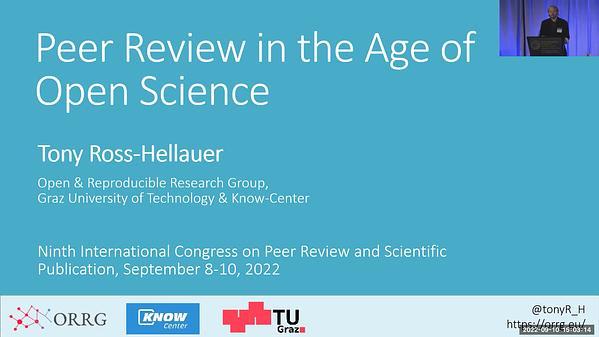poster
Downstream Retraction of Preprinted Research in the Life and Medical Sciences
Objective Retractions have been on the rise in the life and clinical sciences in the last decade.1 In this same period, there has been a greater than 10-fold increase in the posting of preprints by researchers in these fields.2 These developments have introduced challenges with respect to the back propagation of events such as retractions that occur on the journal-published version. The aim of this study was to understand the extent of this problem among servers that routinely link their preprints to their corollary versions published in journals.
Design To present a snapshot of the current state of downstream retractions of articles preprinted in 3 large preprint servers (Research Square, bioRxiv, and medRxiv), the DOIs of the journal-published versions linked to preprints were matched to entries in the Retraction Watch database. The analysis covered November 2013 to November 2021. Preprints with downstream retractions were checked for (1) a notice of the retraction and (2) a notice of withdrawal of the preprint. The times from preprinting to publication and publication to retraction were calculated, and the types of misconduct (mistreatment of research subjects, falsification and fabrication of data, and piracy and plagiarism) were categorized for each retraction.
Results A total of 30 retractions were identified, representing only 0.03% of all content with journal links posted on these servers. Of these, 11 (36.7%) were clearly noted by the preprint servers; however, the existence of a preprint was only acknowledged by the retracting journal in 1 instance (3.3%). The mean time from publication to retraction was 9.2 months, notably lower than the mean of 22.3 months for articles overall. In 20 of 30 cases (66.7%), retractions downstream of preprints were due, at least in part, to some form of research misconduct. In 18 of 30 cases (60%), the nature of the retraction suggested that the conclusions were no longer reliable.
Conclusions As adoption of preprints continues to grow, serious consideration should be given to ensuring that preprints are digitally connected with associated publications and building reliable mechanisms for propagating critical updates. It is incumbent on preprint servers, journals, and the systems that connect them to address these issues before their scale becomes untenable.
References 1. Steen RG, Casadevall A, Fang FC. Why has the number of scientific retractions increased? PLoS ONE. 2013;8:e68397. doi:10.1371/journal.pone.0068397 2. Vasconcelos GL, Cordeiro LP, Duarte-Filho GC, Brum AA. Modeling the epidemic growth of preprints on COVID-19 and SARS-CoV-2. Front Phys. Published online March 23, 2021. doi:10.3389/fphy.2021.603502
Conflict of Interest Disclosures: At the time of this study, Michele Avissar-Whiting was the editor in chief of the Research Square preprint platform.


